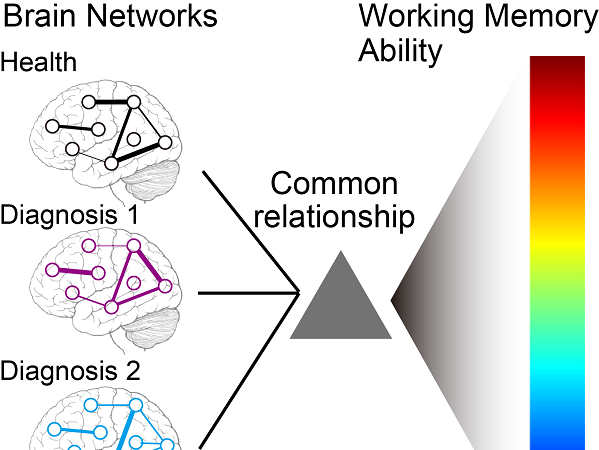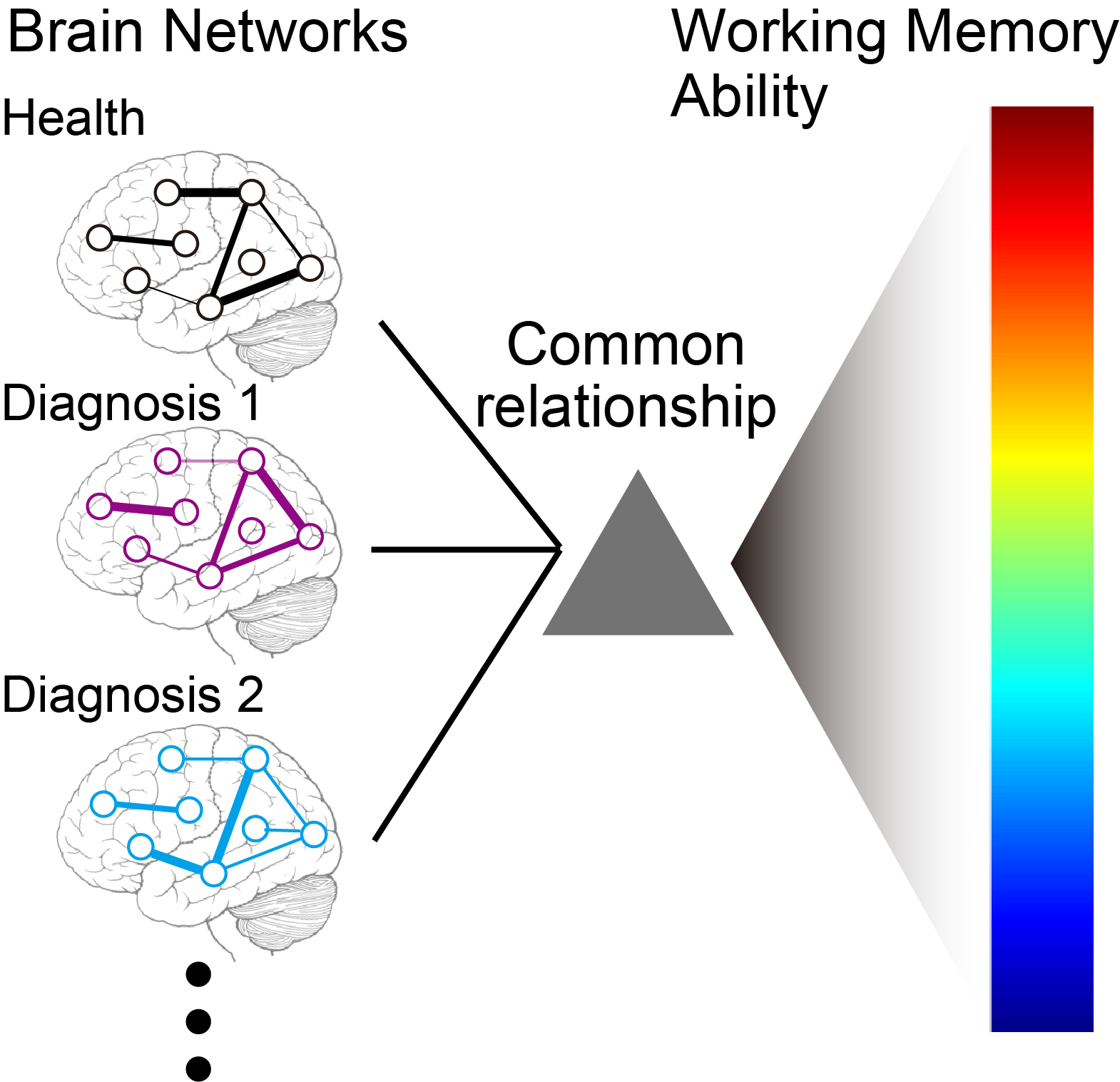Similarities between mental health and diseases Brain scans and math identify one neural network shared across health and diseases


A model succeeded in predicting working memory ability across healthy subjects and those with psychiatric diseases. This suggests that working memory deficit is a continuum explained by a neural mechanism shared across diseases rather than a set of discrete dysfunctions.
© Masahiro Yamashita and Hiroshi Imamizu.
Scientists have designed a mathematical model that can predict a person's working memory ability, the type of memory used to temporarily hold information so that it can be processed by the brain. With further refinement, the model may be used to identify brain patterns that continuously change from health to psychiatric disease.
Researchers at the University of Tokyo, Kyoto University and the Advanced Telecommunications Research Institute International in Japan collaborated to design the mathematical model. The group measured activity throughout the brains of healthy adults while they were awake using functional magnetic resonance imaging (fMRI), a technique that can visualize active regions of the brain by recognizing small changes in blood flow.
Researchers processed all the data using a form of artificial intelligence called machine learning in which their computers were trained to identify parts of the brain that are active/inactive at the same time and likely work together as so-called neural networks. The scientists designed a mathematical model that could predict a person’s working memory ability based on the neural networks seen in fMRI data.
"Mathematical models make it easier to understand the complicated mechanisms that mediate brain and cognitive functions," said Professor Hiroshi Imamizu of the University of Tokyo’s Graduate School of Humanities and Sociology, and one of the research project leaders.
Researchers then performed the same type of brain scan for 900 patients diagnosed with schizophrenia, major depressive disorder, obsessive-compulsive disorder or autism spectrum disorder. The mathematical model built using data from healthy adults also successfully predicted patients' working memory ability.
"Our result suggests the existence of working memory neural networks that are common in both healthy people and those with psychiatric diseases," said Imamizu.
In future research projects, the team hopes to use their mathematical model, which currently predicts working memory ability, to identify and quantify neural network differences that characterize health and psychiatric diseases.
Papers
Yamashita M, Yoshihara Y, Hashimoto R, Yahata N, Ichikawa N, Sakai Y, Yamada T, Matsukawa N, Okada G, Tanaka SC, Kasai K, Kato N, Okamoto Y, Seymour B, Takahashi H, Kawato M, Imamizu H., "A prediction model of working memory across health and psychiatric disease using whole-brain functional connectivity.," eLife: December 10, 2018, doi:10.7554/eLife.38844.
Link (Publication )
)
Related links
- Graduate School of Humanities and Sociology

- Imamizu Laboratory for Learning Mechanisms, Graduate School of Humanities and Sociology

- Advanced Telecommunication Research Institute International

- Department of Psychiatry, Kyoto University Hospital

- Center for Information and Neural Networks






